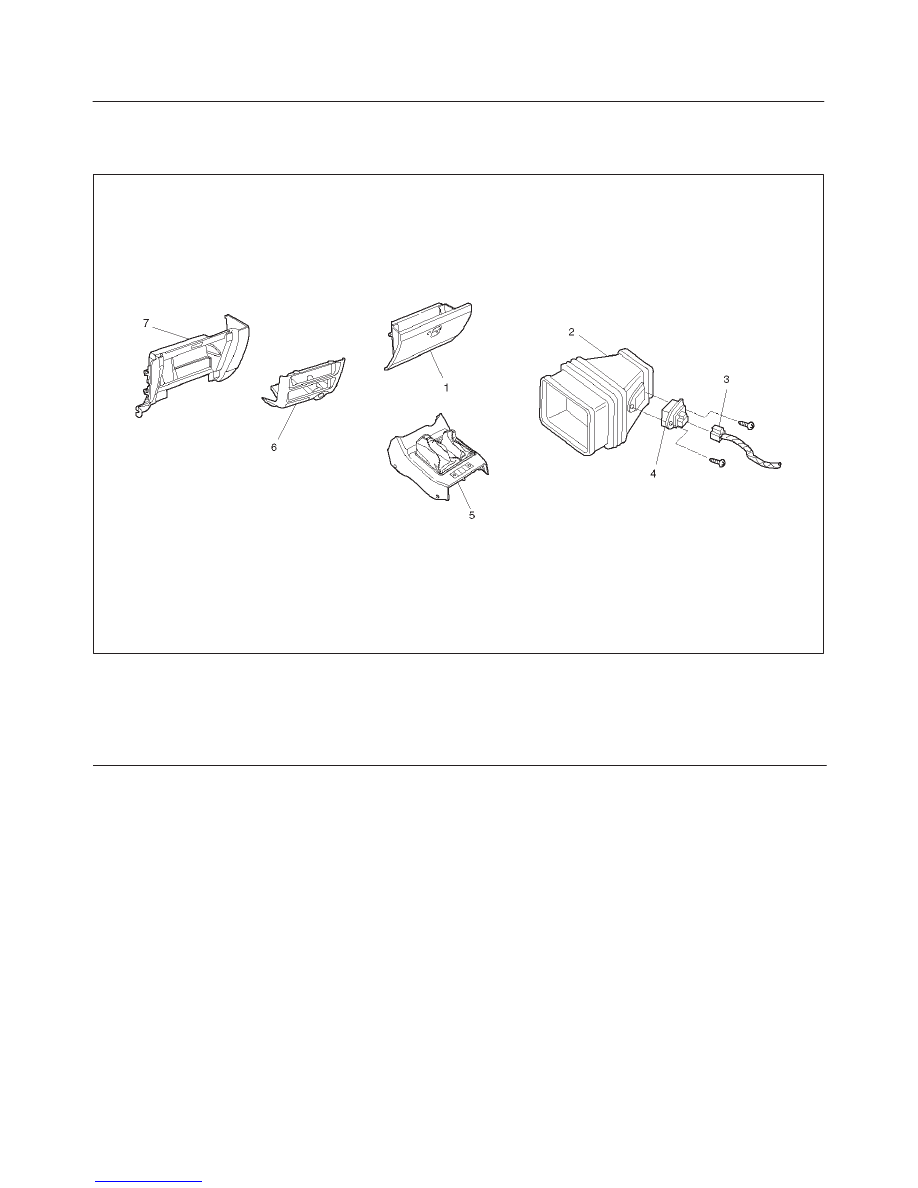Isuzu Trooper (2000 year). Manual - part 15

HEATING, VENTILATION AND AIR CONDITIONING (HVAC) 1A–29
Resistor
Resistor and Associated Parts
874RW005
Legend
(1) Glove Box
(2) Duct (Heater only)
(3) Resistor Connector
(4) Resistor
(5) Front Console
(6) Lower Cluster
(7) Instrument Panel Passenger Lower Cover
Assembly
Removal
1. Disconnect the battery ground cable.
2. Remove front console.
3. Remove lower cluster.
4. Remove glove box.
5. Remove instrument panel passenger lower cover
assembly.
D
Refer to Instrument Panel Assembly in Body and
Accessories section.
6. Remove resistor connector.
7. Remove duct (heater only).
8. Remove resistor.
Installation
To install, follow the removal steps in the reverse order.